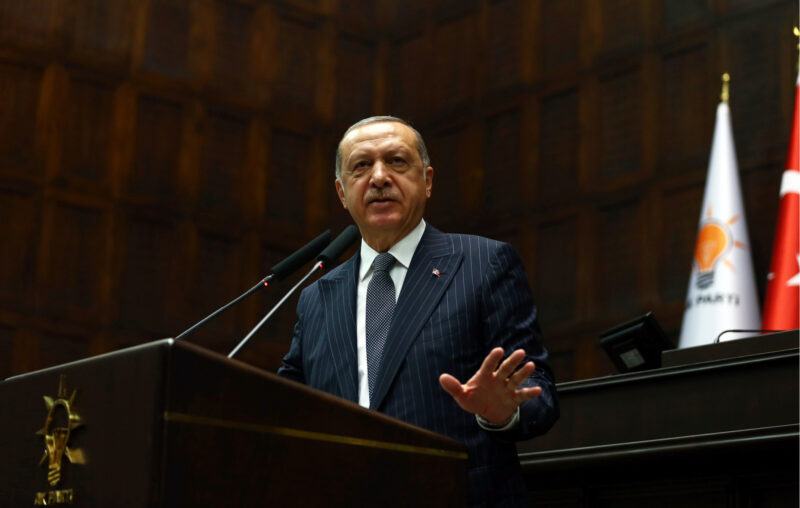The Unfolding Tragedy In Turkey Underscores Preeminence of Currency Policy

In the 1950s the top federal tax rate on individual earners in the U.S. exceeded 90%. The number is eye-catching to say the least, but it’s also a bit misleading.
As low-tax advocates Brian Domitrovic and Larry Kudlow reported in their 2016 book JFK and the Reagan Revolution, the actual tax rate for America’s richest was quite a bit lower. More in the 20 to 30% range. Still way too high, but much lower than the headline rate.
It’s something to think about. To some degree politicians raise taxes in order to lower them. At the very least, this is the logical outcome. As Domitrovic has acknowledged in direct conversation, lobbying shops in Washington, D.C. have a Laffer Curve quality to them, only in reverse. The higher headline rates of taxation go, the greater the number of lobbyists working to bring effective rates down through loopholes.
It’s in a sense a happy reminder that at least in the U.S., the effective tax rate on individuals and corporations will never get anywhere close to 90%. At the same time, it’s an unhappy reminder that the odds of a flat tax, or a straight sales tax are similarly slim to none. Politicians want cushy retirements, and tax simplification isn’t the path to the latter.
That headline tax rates don’t tell the whole story is indicative of something bigger. It speaks to how much more important currency policy is than fiscal, or tax policy. Not only do actual tax rates rarely mirror the top line rate, it’s useful to remember tax codes are meant to be maneuvered around. Poor currency policy is less simple to evade simply because it can pounce so quickly. With taxes, legislation leading to increases has a deliberate quality to it. Particularly in the U.S.
For a recent example of horrid currency policy, it’s useful to look to Turkey. It’s a live example (so is Lebanon with its pound) of how economically-crushing currency errors can be. In a piece written for the Cato Institute, Mustafa Aykol reports that while in 2012 a dollar was the exchange equal of 1.8 Turkish liras, at present a dollar buys 13.7. Please think about the brutal economic implications of this development.
It cannot be stressed enough that no one earns dollars, euros, yen, pounds, or Turkish liras; rather they earn what these currencies can be exchanged for. The barter economy of many centuries past still exists today. Our work represents our capacity to import; from across the street or the other side of the world. Trade is still products for products, only for the introduction of “money” to make it possible for us to trade much more seamlessly with other producers.
Money is an agreement about value among producers that enables workers with wildly disparate wants and needs to exchange the fruits of their work with billions of workers around the world who similarly have disparate wants and needs. We work for dollars, euros, yen, pounds, and Turkish liras (among others), but once again we work for those monetary forms given the goods and services that they command in the marketplace.
All of which speaks to the economic horror of currency devaluation. It is very specifically a taking of our precious work. When a currency loses value, the goods and services that it can be exchanged for declines. Applied to Turkey’s citizenry, imagine the rage inside those who worked diligently over the years and decades for lira that are relentlessly shrinking in value. All that they’ve worked for eviscerated.
Shamefully, economists to a high degree believe currency devaluation a good thing. A stimulative thing.
Economists claim that currency devaluations boost country economies because currency cheapness renders the value of exported goods less expensive. Such a belief would be funny if it weren’t so sad, and so damaging to innocent people.
There are no competitive gains earned by devaluation. None at all. The opposite occurs. And it does so logically. For one, money is a veil. Changes in its value can’t alter the real price of anything. Applied to Turkey, while a lot or a little may be manufactured or produced in the country, all production is a consequence of global cooperation among producers. Translated, Turkish producers are reliant on imported inputs to create goods and services. If the lira is in decline, the cost of production in lira will rise. Devaluation cheapens nothing other than the currency itself.
After which, competitive prices are a consequence of investment. When investment is abundant, advances are achieved that push down the price of production. Devaluation runs specifically counter to lower prices precisely because devaluation is a tax on investors in pursuit of future income streams denominated in – you guessed it – money.
And then there’s the matter of what an “economy” is. It’s just people. Are the people improved economically if the money they earn buys less and less? The question answers itself. What harms the people most certainly can’t grow an economy that is comprised of those same people.
All of this rates mention given the importance that some in the economics profession and commentariat attach to fiscal policy, and in particular tax policy. They say it trumps monetary policy. Well, that’s true in a sense. “Monetary policy,” whereby central bankers vainly aim to “stimulate” activity through rate and “money supply” machinations, can do nothing to boost growth. Stated simply, money is a consequence of economic growth as opposed to an instigator. Central banks can’t make prosperity happen despite their protests otherwise.
On the other hand, the currency policy that usually takes place away from central banks is of utmost importance. When a currency collapses in the marketplace, all manner of wealth is destroyed, along with investments in the creation of future wealth.
Applied to policy more broadly, we know from history that tax rates, while a burdensome price on work, can be worked around in time. See Domitrovic. Not so with currency policy. When devaluation rears its ugly head, the theft is immediate. And immediately crushing economically. No doubt hedging can mitigate currency lurches, but it can’t reverse the initial theft. Currency policy rates top-of-the-pyramid attention, but doesn’t get it. Turkey’s struggles remind us of currency policy’s preeminence.
Reprinted from RealClearMarkets










